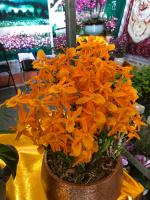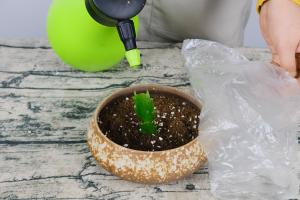Are Evergreen Trees Planted on Roofs?
Evergreen trees are highly appreciated for their beauty and versatility in landscaping. They come in different sizes, shapes, and colors, and can be used to create a wide range of designs, from traditional to modern, from cozy to luxurious. Additionally, evergreen trees can provide a host of benefits, such as shade, privacy, wind protection, noise reduction, and air purification. However, one question that often comes up about evergreen trees is whether they can be planted on roofs. In this article, we will explore the possibilities and limitations of planting evergreen trees on roofs.
The Advantages of Planting Trees on Roofs
Before diving into the specifics of evergreen trees, let's take a moment to examine the reasons why planting trees on roofs has become a growing trend in recent years. Here are some of the advantages:
Improving energy efficiency: Trees can act as natural insulators, reducing the amount of heat that enters or leaves a building through the roof. This can lead to lower energy bills and a more comfortable indoor climate.
Reducing urban heat island effect: Trees can help to cool down urban areas by providing shade and releasing moisture through evapotranspiration. This can counteract the heat generated by concrete, asphalt, and other man-made surfaces.
Increasing green space: Trees can add beauty and biodiversity to otherwise barren rooftops, creating new habitats for birds, insects, and other wildlife. In some cases, rooftops can also be used for urban agriculture, providing fresh produce for local communities.
The Challenges of Planting Trees on Roofs
Despite the potential benefits, planting trees on roofs is not without its challenges. Here are some of the factors that need to be considered:
Structural stability: Trees are heavy and can put a significant load on the roof. This can cause damage to the building if the roof is not designed to support the weight. Before planting trees on a roof, it is essential to consult a structural engineer to assess the feasibility and safety of the project.
Root growth: Trees need deep and wide soil volumes to thrive, but most roofs have limited soil depth and capacity. Moreover, tree roots can penetrate and damage roofing membranes, leading to leaks and other moisture problems. Therefore, it is crucial to choose trees that have a shallow or non-invasive root system and to install proper root barriers and drainage systems.
Maintenance: Trees require regular pruning, watering, fertilizing, and pest control to stay healthy and attractive. However, rooftops can be challenging to access and maintain, especially for large trees. Therefore, it is essential to plan for the ongoing care and management of the trees, including the use of specialized equipment and trained personnel.
The Types of Evergreen Trees Suitable for Roofs
Assuming that a roof has been determined to be structurally sound and appropriate for planting trees, and that the necessary measures have been taken to prevent root intrusion and maintenance issues, what are some evergreen trees that can be used for this purpose? Here are some options:
Junipers: These low-growing shrubs can provide a green carpet effect on flat or sloping roofs. They are drought-tolerant and have a shallow root system, making them ideal for small-scale green roofs.
Spruces: These conifers have a narrow and upright growth habit, making them suitable for tight spaces and windy conditions. They are also relatively easy to maintain, requiring minimal pruning and watering.
Pines: These tall and slender trees can add a vertical element to rooftops and create a striking contrast against the sky. They are drought-resistant and can tolerate poor soils, but they may need to be pruned regularly to prevent excessive growth.
The Conclusion
Overall, planting evergreen trees on roofs can be a rewarding and sustainable way to enhance the beauty, functionality, and ecological value of urban spaces. However, it requires careful planning, design, and execution, as well as ongoing management and maintenance. Before embarking on such a project, it is advisable to consult with experts and to research the specific requirements and challenges of the chosen species and site. With the right approach and attitude, evergreen trees on roofs can thrive and bring joy to generations to come.

 how many times do yo...
how many times do yo... how many planted tre...
how many planted tre... how many pine trees ...
how many pine trees ... how many pecan trees...
how many pecan trees... how many plants comp...
how many plants comp... how many plants can ...
how many plants can ... how many plants and ...
how many plants and ... how many pepper plan...
how many pepper plan...































